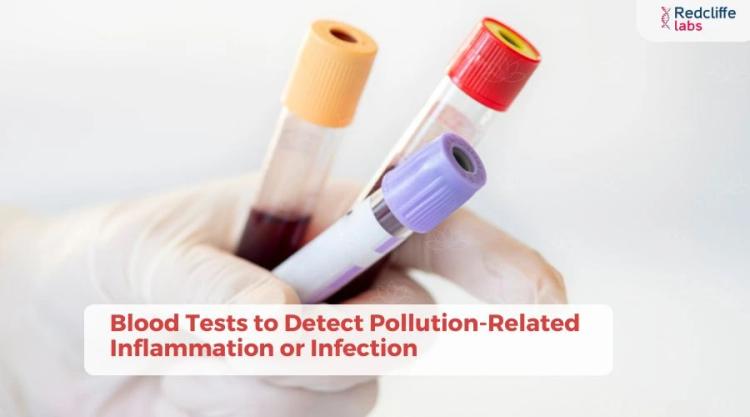Neomycin Allergy Test: Symptoms, Preventions, & Treatment

Medically Reviewed By
Prof. Ashok Rattan
Written By Muskan Taneja
on Sep 2, 2024
Last Edit Made By Muskan Taneja
on Jul 19, 2025

Neomycin is a drug that can harm your kidneys, ears, eyes, nervous system, and brain. Manufacturers commonly include this drug in ointments, lotions, and creams. Neomycin can cause allergies in some people. Neomycin is popular, and its names include Neosporin, Mycifradin, and Myciguent. While buying any product, read the label to detect neomycin’s presence. Identifying signs at a mild level can help in better treatment. Redness is a common sign of neomycin allergy.
If you experience symptoms, better consult a doctor and get yourself tested. Treatment can prevent serious health complications. The doctor may recommend a neomycin allergy test. Get the test from Redcliffe Labs at INR 799. Redcliffe Labs is India’s trusted diagnostic laboratory. The test booking process takes only a couple of minutes. Our DMLT-certified phlebotomists will come to your home to collect the blood sample.
Test Details in Brief
|
Also known as |
Neosporin, Mycifardin, Myciguent. |
|
Purpose |
Identify neomycin allergy through enlisting patch tests. |
|
Preparation |
Allergies can stress you out. Try to keep your mind calm and stress-free. |
|
Fasting |
The test needs no fasting. |
|
Reports Within |
4 Days |
|
Cost |
INR 799 |
Where is Neomycin Commonly Found?
Neomycin sulfate is an antibiotic commonly found in dental and veterinary care products. Neomycin sulfate is present in products such as ointments, eye and ear drops, topical creams, and lotions. Other things where you can find neomycin are:
- Combination of antibacterial and topical corticosteroids.
- Neomycin tablets to cure gastrointestinal bacteria.
- Tablets before surgery and also to avoid infection.
- In the past, some vaccines employed it as a preservative.
Certain antibiotics, including neomycin, commonly contain the ingredient.
- Topical creams, lotions, and ointment- Viaderm KC and Pimafucart
- Eye preparations- Maxitrol
- Eardrops- Kenacomb
- Pet foods
- Dental root canal work
- In some deodorants, soaps, and cosmetics
- Veterinary products
Which Products Should Neomycin Allergic People Should Avoid?
Every product has the following ingredients on its label. Further, a doctor is the best person to guide you with the products you should use and avoid. Products with:
- Neomix
- Neomycin sulfate
- Dexacidin
- Intromycin
- Neosone
- Otobiotic
- Neomycin thiosulfate salt
- Neomycin sulfate
- Neofracin
How To Know If Allergic To Neomycin?
Knowing products with neomycin helps; however, detecting how neomycin can impact your body is important. Neomycin allergic reactions are prevalent in the body. Some common symptoms of Neomycin include:
- Itching
- Redness
- Swelling
- Hives
- Red, itchy skin rash
- Peeling off the skin
- Burning skin sensation
- Pain or tenderness
- Dry or cracked skin
- Eczema at or around the applied area
- Eatery or itchy eyes
- Difficulty in breathing
- Wheezing
- Anaphylaxis
These reactions are visible in the neomycin-applied areas. These are mild symptoms. However, severe symptoms include anaphylaxis.
How To Prevent The Neomycin Allergy?
‘Prevention is better than cure’, which is a popular saying. Taking medicines and necessary precautions can help with the neomycin allergy. It involves the right dosage, the correct application method, and being aware of the potential reactions. What else? Let’s learn.
- The right use of Neomycin
Your healthcare provider will direct you to the right way. Follow the steps instructed by them. Don’t overuse neomycin, as it can increase the risk of allergy. Make sure to apply neomycin in a moderate form near sensitive areas such as eyes, ears, and open wounds.
- Know the precautions before using Neomycin.
Before applying any product, read the product label carefully. Know the amount of neomycin present in the product. Also, check if there are any application guidelines given. It is essential to avoid mild and severe symptoms. Ask your doctor if the treatment has any severe allergic reactions.
What is the Treatment of Neomycin Allergy?
The primary treatment for neomycin allergy is avoiding the allergen. If the allergy has turned into severe, OTC antihistamines help eliminate symptoms. A doctor might prescribe steroids or epinephrine.
Doctors can also prescribe sublingual immunotherapy, which involves placing a small dose of allergen under the patient's tongue to boost tolerance. It is commonly used to reduce future chances and provide long-lasting relief.
Also, read https://redcliffelabs.com/myhealth/blood-test/average-blood-tests-cost-in-india-complete-price-list/
Side-effects of Neomycin Allergy
Medicines can cure and treat the neomycin allergy. Common side effects of allergy include:
- Buring
- Stinging
- Redness
- Hearing problems
- Unsteadiness
- Nausea
- Diarrhea
Even after treatment and medicines, if you experience any side effects. Consult a doctor for the right treatment.
Neomycin Allergy Test @ Redcliffe Labs
Products such as lotions, creams, and perfumes contain neomycin, which can be allergic to some. The neomycin allergy test measures neomycin’s reaction and causes. People who experience slight redness must seek medical consultation before these mild signs turn severe. If you wish to book the neomycin allergy test, get it from Redcliffe Labs. They follow the Six Sigma process method to ensure 100% report correctness. This is a simple blood test that needs no major preparation. So, if you are seeing signs, contact Redcliffe Labs for the right diagnostic treatment.



